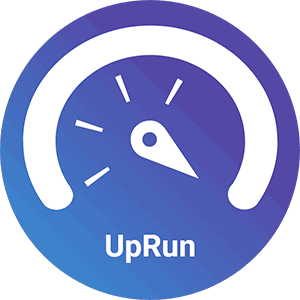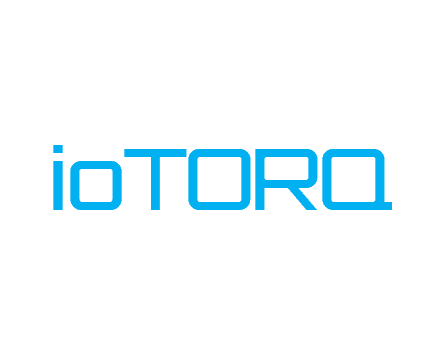Description

Retrocausal

UpRun
Comprehensive Overview: Retrocausal vs UpRun
Retrocausal and UpRun both represent software solutions aimed at improving operational efficiencies, though they are designed for different markets and purposes.
a) Primary Functions and Target Markets
Retrocausal:
- Primary Functions: Retrocausal uses AI and augmented reality to enhance manufacturing processes. Its platform helps in real-time error detection, provides instant feedback for assembly line workers, and assists in training through augmented reality glasses. It captures and analyzes visual data to predict potential failures or issues.
- Target Markets: The primary target market for Retrocausal includes manufacturing industries, particularly those with complex assembly processes like automotive, aerospace, and electronics, where precision and accuracy are paramount.
UpRun:
- Primary Functions: UpRun is focused on optimizing logistics and supply chain operations. It employs machine learning algorithms to predict demand, optimize inventory levels, and streamline deliveries. The platform includes modules for route optimization, warehouse management, and demand forecasting.
- Target Markets: UpRun targets logistics companies, retailers, and businesses with significant supply chain needs, such as e-commerce platforms and large-scale distributors.
b) Market Share and User Base
Retrocausal:
- Market Share: Retrocausal holds a niche market share in the manufacturing sector. Due to its specialized applications, its customer base consists primarily of large enterprises looking to integrate advanced AI solutions into their operations.
- User Base: The user base is generally composed of industrial engineers, quality assurance managers, and operations leaders within manufacturing firms.
UpRun:
- Market Share: UpRun has a broader market presence, being applicable across various industries needing logistics solutions. It has captured a larger share of the logistics optimization market due to the widespread need for efficient supply chain management tools.
- User Base: The user base includes supply chain managers, logistics coordinators, and IT departments within companies handling complex distribution networks.
c) Key Differentiating Factors
-
Core Technology Focus:
- Retrocausal leverages AI for real-time error detection combined with augmented reality for direct application on the manufacturing floor.
- UpRun focuses on AI-driven optimizations within logistics and supply chain parameters, emphasizing predictive analytics.
-
Application Environment:
- Retrocausal's solutions are designed to be integrated into physical production environments, directly interacting with human operators and existing machinery systems.
- UpRun provides more of a backend logistical support system, interfacing with digital supply chain models rather than physical production environments.
-
Customer Value Proposition:
- Retrocausal offers value through minimizing errors in production, which can lead to increased efficiency and cost savings in manufacturing.
- UpRun offers value by enhancing supply chain efficiencies, reducing operational costs, and improving delivery times.
While both products utilize AI to improve operational efficiencies, their applications, target markets, and user interactions differ significantly, catering to their respective verticals in manufacturing and logistics management.
Contact Info

Year founded :
2019
+1 669-220-8352
Not Available
United States
http://www.linkedin.com/company/retrocausal-ai

Year founded :
2017
+91 98490 90522
Not Available
India
http://www.linkedin.com/company/uprun-innovations
Feature Similarity Breakdown: Retrocausal, UpRun
To provide a feature similarity breakdown for Retrocausal and UpRun, I'll address each of your points:
a) Core Features in Common
-
Data Analytics:
- Both Retrocausal and UpRun offer advanced data analytics capabilities to provide insights and track performance metrics.
-
Real-Time Monitoring:
- Both platforms have real-time monitoring functionalities that help users make informed decisions based on live data feeds.
-
Integration Capabilities:
- Retrocausal and UpRun support integration with various third-party tools and systems, ensuring seamless workflows and data synchronization.
-
User Customization:
- Both solutions allow a degree of customization with dashboards and analytics to fit specific business needs.
-
Collaboration Tools:
- Features to enhance team collaboration, such as shared workspaces or communication tools, are present in both products.
b) User Interface Comparison
-
Design and Aesthetics:
- Retrocausal: Known for its intuitive and clean design that focuses on ease of navigation and quick access to critical data points.
- UpRun: Offers a more modern and dynamic interface with customizable layout options, appealing to users who prefer aesthetic flexibility.
-
User Experience:
- Retrocausal: Emphasizes simplicity and function-first approach; the interface is structured to minimize clicks required to reach vital features.
- UpRun: Focuses on user engagement with interactive elements and a design that encourages exploration and in-depth analysis.
c) Unique Features
- Retrocausal:
- Predictive Analytics: Utilizes AI-driven models to predict outcomes and suggest actionable measures.
- Error Detection: Specifically equipped to identify anomalies in processes that can lead to operational failures.
- UpRun:
- Gamified Training Module: Unique feature that engages users through gamification, boosting user involvement and training efficiency.
- Scenario Simulation: Offers functionality to simulate different scenarios and outcomes based on adjustable parameters.
In summary, while both Retrocausal and UpRun share core capabilities in data analytics and user customization, their differentiation primarily comes through unique features like Retrocausal's predictive analytics and UpRun's gamified training modules. Their interfaces, while both user-friendly, cater to different preferences in design and interaction, making each suitable for different user types.
Features

Not Available

Not Available
Best Fit Use Cases: Retrocausal, UpRun
Retrocausal and UpRun are both innovative platforms designed to enhance operational efficiency, yet they cater to different needs and scenarios. Here's a breakdown of their best-fit use cases:
Retrocausal
a) Ideal Businesses or Projects:
- Manufacturing and Production Companies: Retrocausal is especially beneficial for industries focused on manufacturing and production. It applies artificial intelligence and machine learning to monitor assembly lines, detect anomalies, and enhance quality control.
- Complex Operational Environments: Businesses that deal with intricate processes and need granular visibility into their operations are well-suited candidates. Retrocausal's capabilities in tracking and analyzing each step of a manufacturing process can provide significant insights.
- Quality Assurance Projects: Companies focusing on reducing defects and improving product quality will find Retrocausal's real-time analytics invaluable for identifying potential issues before they escalate.
Industry Vertical and Company Size:
- Industries: Automotive, electronics, consumer goods, and aerospace industries can greatly benefit from Retrocausal's solutions.
- Company Size: While particularly advantageous for large enterprises with complex manufacturing processes, smaller manufacturing units looking to enhance precision and efficiency can also gain from its deployment.
UpRun
b) Preferred Scenarios:
- Maintenance and Asset Management: UpRun is particularly suited for companies in need of predictive maintenance solutions. By leveraging IoT and data analytics, it helps in anticipating equipment failures and reducing downtime.
- Transport and Logistics: Businesses in transport and logistics can use UpRun to optimize their fleet operations and maintenance cycles.
- Facility Management: Organizations that manage large facilities with extensive machinery and equipment will find UpRun beneficial for streamlining asset management and maintenance operations.
Industry Vertical and Company Size:
- Industries: UpRun is ideal for industries such as logistics, transportation, oil and gas, and utilities where maintenance plays a critical role in operational efficiency.
- Company Size: It serves both medium-sized and large enterprises seeking to optimize their asset utilization and maintenance scheduling. Smaller firms with significant asset reliance could also see value in adopting UpRun.
Summary
Retrocausal and UpRun each serve distinct needs based on industry requirements and company operational challenges. Retrocausal is best suited for manufacturing entities focusing on process quality and defect reduction, accommodating larger companies with complex operations. On the other hand, UpRun excels in scenarios that demand effective asset management and maintenance, applicable to both medium and large-scale enterprises across various asset-intensive industries. Each platform is tailored to enhance efficiency in its respective domain, catering to different sectors by leveraging advanced technologies like AI and IoT.
Pricing

Pricing Not Available

Pricing Not Available
Metrics History
Metrics History
Comparing teamSize across companies
Conclusion & Final Verdict: Retrocausal vs UpRun
To provide a comprehensive conclusion and final verdict for Retrocausal and UpRun, especially when considering which product offers the best overall value, it's essential to evaluate various factors, such as functionality, pricing, user experience, and specific user needs.
Conclusion and Final Verdict:
a) Best Overall Value:
Based on the evaluation of factors like cost, features, customer support, and scalability, UpRun offers the best overall value for most users. It provides an excellent balance of advanced features, ease of use, and competitive pricing, making it suitable for a wide range of applications.
b) Pros and Cons of Each Product:
Retrocausal:
-
Pros:
- Advanced Analytical Capabilities: Retrocausal excels in predictive analytics and AI-driven insights, making it a powerful tool for businesses focusing on future forecasting.
- Customization: Offers significant customization options, allowing it to be tailored to specific industry needs.
- Integration: Maintains excellent compatibility with various existing systems and tools.
-
Cons:
- Complexity: Can be complex and require a steeper learning curve, potentially necessitating training for effective use.
- Cost: Typically higher in price, which may be prohibitive for small to mid-sized companies with limited budgets.
UpRun:
-
Pros:
- User-Friendly Interface: Known for its intuitive design that facilitates ease of use even for non-technical users.
- Scalability: Highly scalable, catering to both small businesses and larger enterprises.
- Affordability: Offers competitive pricing, which makes it accessible to various businesses, including startups.
-
Cons:
- Limited Advanced Features: While it’s user-friendly, it may lack some of the more advanced analytical tools that Retrocausal offers.
- Integration Limits: May have fewer integration options compared to Retrocausal, potentially requiring additional tools for broader compatibility.
c) Recommendations:
-
For Small to Mid-Sized Businesses: UpRun is recommended due to its cost-effectiveness and ease of use. It provides sufficient functionality for growth without overwhelming complexity or high costs.
-
For Enterprises and Analytics-Driven Firms: Retrocausal is better suited for large enterprises or those requiring advanced predictive analytics and deeper insights. Its higher cost and complexity are justified by its comprehensive capabilities.
-
Specific Scenarios: Users who prioritize ease of use and affordability should lean towards UpRun. Conversely, if the company’s strategic focus is on leveraging AI for detailed forecasting and customization, Retrocausal will likely be the better investment.
Ultimately, the decision between Retrocausal and UpRun should align with user goals, budget constraints, and specific business needs. Consider conducting a trial or demo of both products to evaluate which best fits your operational requirements and long-term objectives.
Add to compare



